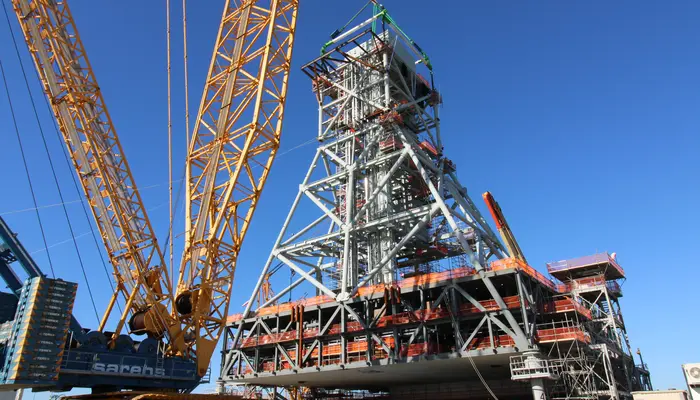NASA’s Kennedy Space Center is gearing up for the Artemis Program, with significant progress in building ground systems for upcoming lunar missions. Teams are advancing hardware for Artemis II, the first crewed Artemis flight, and preparing the mobile launcher for Artemis IV. The keyword “Artemis Program” underscores NASA’s commitment to enabling human exploration of the Moon and beyond.
Advancing Artemis II Preparations
Crews at Kennedy are working on multiple fronts to prepare for Artemis II. This mission will test the Space Launch System (SLS) rocket and the Orion spacecraft with astronauts aboard. Technicians are testing the upper stage umbilical connections, which will supply fuel and other resources to the rocket at the launch pad. These efforts are critical to ensuring the rocket’s seamless operation during launch.
Building Mobile Launcher 2
Construction of Mobile Launcher 2 (ML2) is in full swing for the Artemis IV mission, which will use the upgraded SLS Block 1B rocket. In mid-October 2024, crews installed the “chair,” an 80-foot-tall interface that connects the launcher’s base to the tower modules. By December, teams completed stacking Module 4, the first of seven vertical sections. Using heavy-lift cranes, they hoisted the module 150 feet and secured it to the chair. Once complete, the tower will stand nearly 400 feet tall, equivalent to four Olympic-sized swimming pools placed end-to-end.
Read: Pakistan Launches First Indigenous Satellite EO-1
Ahead of Schedule
The NASA and Bechtel National, Inc. teams are advancing ML2 construction faster than planned. Darrell Foster, ground systems integration manager for NASA’s Exploration Ground Systems Program, stated, “The mobile launcher 2 team is ahead of schedule and gaining momentum.” While the main build site sees rapid progress, additional tower modules are being assembled at a separate site for efficient integration.
Testing Umbilical Interfaces
At the Launch Equipment Test Facility, teams are testing new umbilical systems for the SLS Block 1B rocket’s Exploration Upper Stage. Umbilicals connect critical supplies like fuel, oxidizers, and electrical power from the mobile launcher to the rocket. However ambient temperature tests have been completed, and cryogenic tests using liquid nitrogen and hydrogen are now underway.
Kevin Jumper, lab manager at the test facility, highlighted the progress: “The team has made significant strides in verifying the performance of the Exploration Upper Stage umbilicals.” These tests include triggering umbilical arms to extend and retract, simulating their operation during liftoff.
Supporting Future Lunar Missions
The Artemis Program aims to establish sustainable lunar exploration. However the groundwork at Kennedy Space Center is vital for this vision. As hardware and ground systems come together, each milestone brings humanity closer to returning to the Moon and advancing exploration beyond Earth’s orbit.
NASA’s progress signals a new era in space exploration, driven by cutting-edge engineering and international collaboration. In conclusion the Artemis Program stands as a beacon for future space missions and the next chapter of human exploration.
Follow us on Google News, Instagram, YouTube, Facebook,Whats App, and TikTok for latest updates
